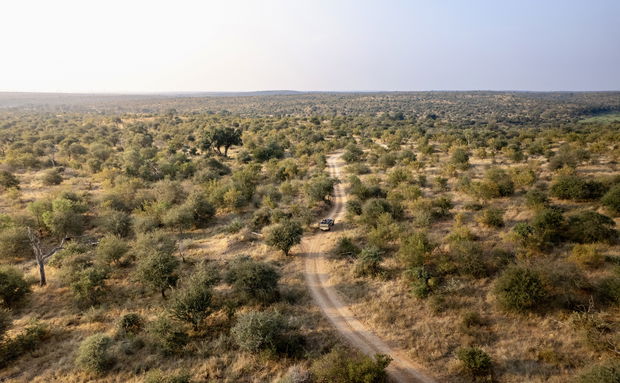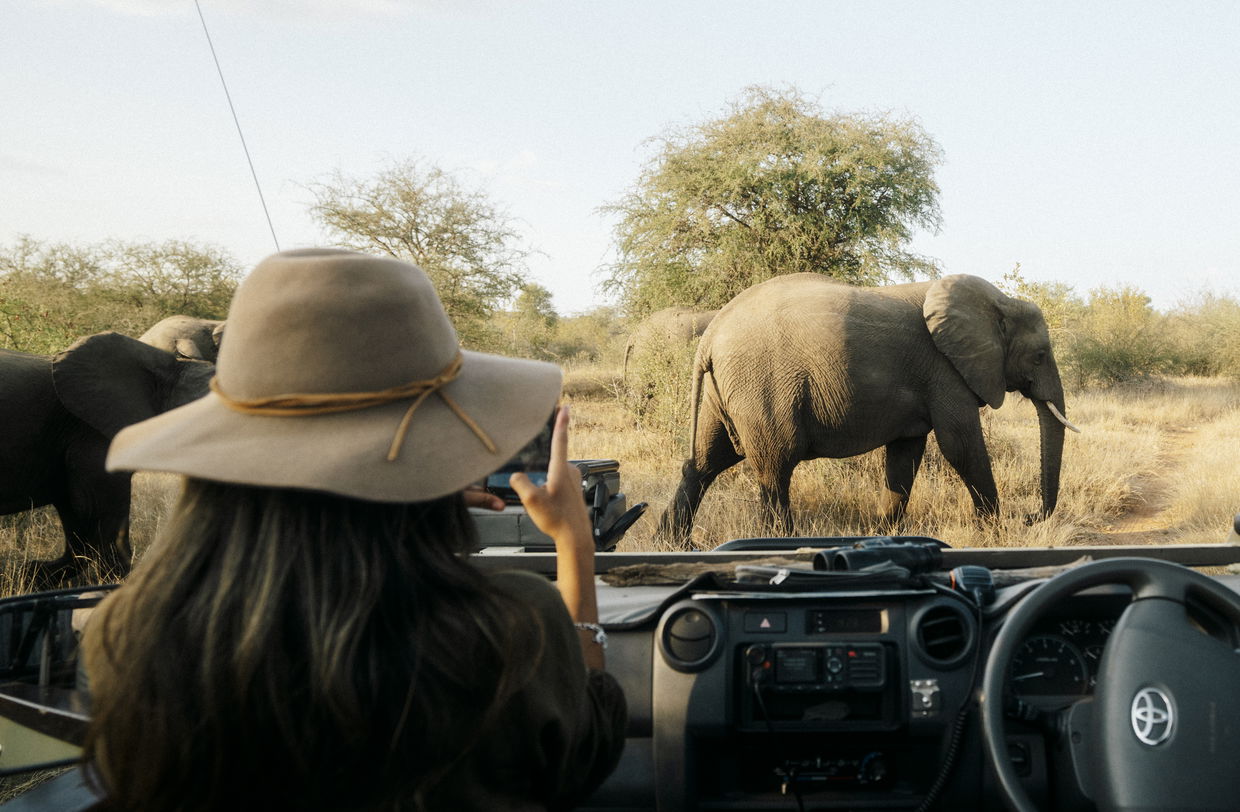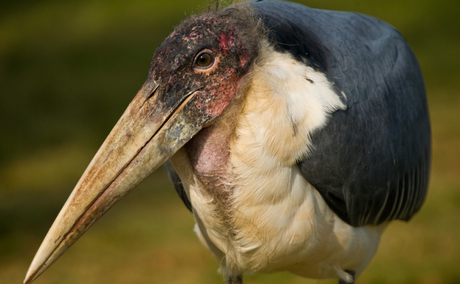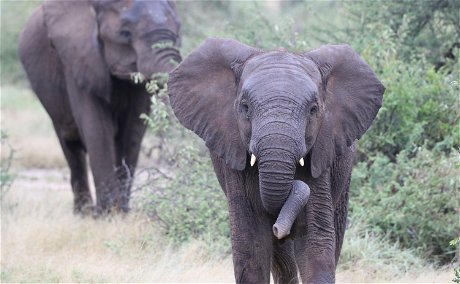Have you ever wondered how our guides manage to find animals in the vast, unfenced wilderness? With thousands of hectares to explore, it’s easy to imagine how challenging it might seem. But for our guides, tracking is a skill honed over years of practice, observation, and connection with the natural world. It’s more than just following footprints—it’s a blend of science, art, and instinct. Let’s take a closer look at the secrets...
Guide to Game Drives: Frequently asked questions

Game drives are often the highlight of any safari experience, and for many, they are the main reason to visit a safari lodge. If you’re a first-time safari-goer, you likely have plenty of questions. In this Guide to Game Drives, we’ll answer some of the most frequently asked questions to help you make the most of your adventure.
Do you go off-road on your game drives?
Off-road driving is permitted within the reserve for key wildlife sightings, particularly when it comes to big cats and African wild dogs. Our guides adhere to strong ethical values, ensuring that while we get up close to these extraordinary animals, we do so without unnecessarily damaging the soil or vegetation as well as keeping the animals’ comfort in mind. If an animal is shy or fearful, we keep our distance.
Do your game drive vehicles have a roof?
The short answer is no! After several trials over the years, we’ve found that guests truly enjoy the open-air experience with a 360-degree view of the bush. Without a roof, you'll be able to spot birds in the sky, leopards and baboons in the trees, or even the towering heads of giraffes feeding next to the vehicle. While we encourage sun protection, we do provide cozy ponchos should the weather change unexpectedly.

What time are your game drives?
Game drive times vary depending on the season and the timing of sunrise and sunset. In winter (June–August), we typically start the morning drive around 6 a.m. and the afternoon drive at 3 p.m. In summer, with longer daylight hours, our morning drive begins at 5:15 a.m., followed by an afternoon drive at 4:30 p.m., allowing for plenty of rest time in between.
Why do your game drives start so early?
For many, spotting predators like big cats is a top priority, and lions and leopards are most active around dawn and dusk. Starting just before sunrise gives us the best chance to see these magnificent animals in action, rather than merely resting. Additionally, summer temperatures can rise quickly, making early mornings more comfortable for both guests and wildlife.

How many people are in a game drive vehicle?
Unless booked as a private group or family, we do our utmost to limit each vehicle to just six participants. This ensures everyone has a window seat and ample space for cameras and personal belongings.
How long does a typical game drive last?
A typical game drive lasts around three hours. This can vary depending on events at the lodge (such as a bush breakfast) or the occurrence of special sightings. Our guides are flexible and may extend the drive if there’s an exciting animal sighting or other memorable moments to experience.

What should I wear on a game drive?
While neutral-coloured clothing is encouraged, it's not mandatory. We recommend wearing closed-toe shoes and a hat year-round. In winter, bring some warm clothing for the chilly early mornings, while in summer, many guests opt for shorts and T-shirts. If you’re concerned about mosquitoes, especially in warmer months, consider light clothing that covers your arms and legs. We are in a low-risk malaria area.
What animals will we see on a game drive?
One of the most common questions we receive! In fact, we've dedicated an entire blog to this question. You can read it here.
Will we stop for breaks during a game drive?
Yes, typically, your morning game drive includes a coffee stop with some freshly baked goodies to fuel your early start. In the afternoon, enjoy a sundowner – a drink of your choice (wine, beer, gin, or soft drinks) – at a scenic spot in the bush. Occasionally, our guides might skip these stops to focus on a special wildlife sighting, ensuring you get the best possible experience.

Can I use the bathroom on a game drive?
Absolutely! One of our favourite sayings is, “Every tree is a lavatory.” Of course, if there are dangerous animals nearby, your guide will advise waiting for a more suitable location. There are no traditional toilets in the bush, so if you prefer a more conventional bathroom stop, we recommend doing so before the game drive begins.
How many vehicles are allowed at a sighting?
We strictly limit sightings to two vehicles. This policy ensures that the animals aren’t disturbed by multiple vehicles and can move freely if they wish. It also maintains a serene experience for our guests – we believe in slow safaris, immersing ourselves in the beauty of nature without the distraction of a “traffic jam” in the bush.
How long do you stay at each wildlife sighting?
The duration of each sighting depends entirely on the situation! We pride ourselves on not imposing time limits, so if the animal remains visible, we may spend up to 30 minutes or more enjoying the moment. On rare occasions, we may limit the time if we want to ensure other guests also have the opportunity to see the sighting. Thanks to our low vehicle density, this is usually not necessary, and often, we share sightings with other vehicles, ensuring that everyone has a chance to experience more wildlife.
Do you have a different question about our game drives? Our team are ready to help! Simply use the contact form or email us on [email protected].
Words by Emily Whiting
Further Reading
Almost everyone has heard of the Big Five: lion, leopard, buffalo, rhino, and elephant—the most dangerous animals to approach on foot and the top sightings for many safari-goers. But have you heard of the Ugly Five? These creatures may not win any beauty contests, but they’re full of character and play crucial roles in the ecosystem! Let’s dive into why they deserve your attention on safari:
Ever wondered about all that safari lingo? Don't get your trunk in a twist! From who are the Big Five (and why) to what they're called in the local language - here's our guide to naming the Big Five.








Share This Post